Lumps and Bumps: What’s on My Skin?

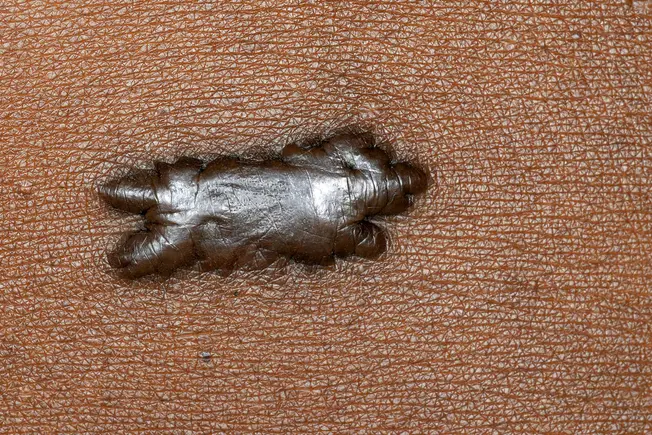
Keloids
A keloid is a bump of scar tissue that grows past a wound’s bounds. It may keep growing weeks after your skin heals. More common in dark skin, keloids can form anywhere, but often they’re on earlobes, shoulders, the upper back, chest, or cheeks. They’re not harmful, so if they don’t bug you, you can leave them alone. But if one is too big or itchy, you can have it treated or removed. To prevent them, avoid piercings or surgery you don’t need.
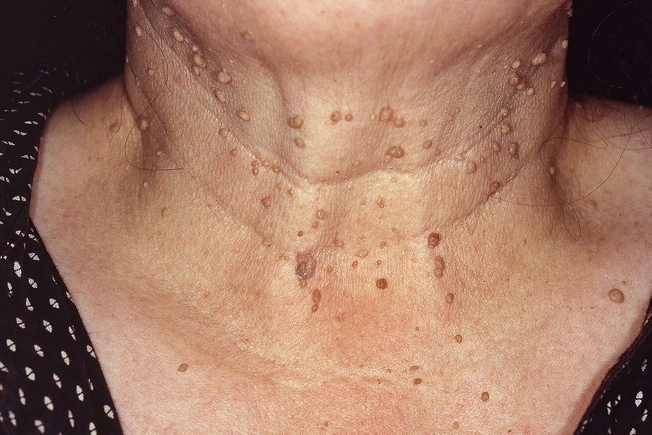
Skin Tags
Skin tags are little growths of skin with a bulge at the end. They usually form in places where your skin rubs together, like your neck, armpits, or groin. For the most part, you don’t need to worry about them. But if they’re painful, bleeding, or irritated, show your doctor. They can freeze or cut them off or use a mild electric current to remove them. Don’t try to get rid of them yourself. That can cause bleeding or an infection.
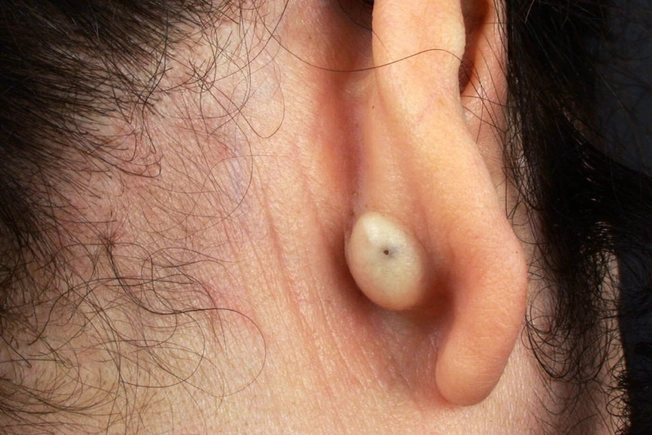
Skin Cysts
These small, flesh-colored sacs under your skin are filled with keratin -- a soft, cheese-like protein. The slow-growing bumps form when a hair follicle or oil gland is blocked or damaged. Most skin cysts are benign (not cancer) and won’t need treatment unless they hurt, leak, or bother you. But it’s best to have a doctor check them to rule out a more serious condition, especially if they get red, painful, or swollen.
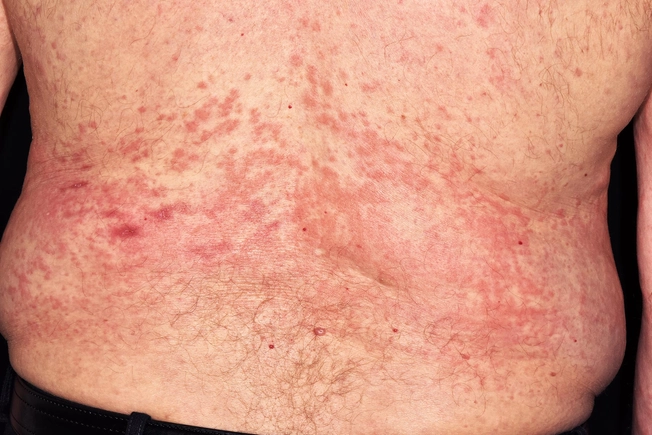
Hives
There are a lot of things that can cause these itchy, swollen welts -- an allergy, infection, sun, exercise, stress, or an illness. The bumps vary in size and can merge to form larger ones. Hives often fade within a day, but new ones can appear as the old ones go away. A bout may last days or weeks. If you know what triggers your hives, avoid it. A cool cloth or shower can soothe mild cases. Antihistamines or steroids help, too.
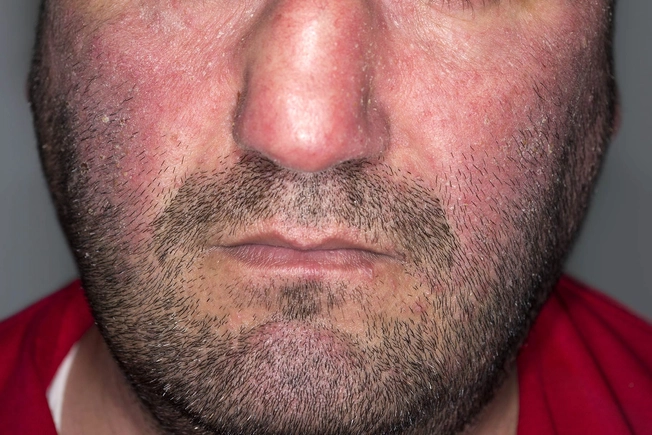
Atopic Dermatitis
Atopic dermatitis, or eczema, sometimes causes small, itchy bumps that may ooze fluid. It's not clear exactly what causes this long-lasting condition, but genes probably play a role. It's also linked to allergies and asthma. Doctors treat eczema with creams, pills, and shots to help ease the inflammation. You can help by keeping skin moist and avoiding things that trigger outbreaks, like stress or certain soaps.
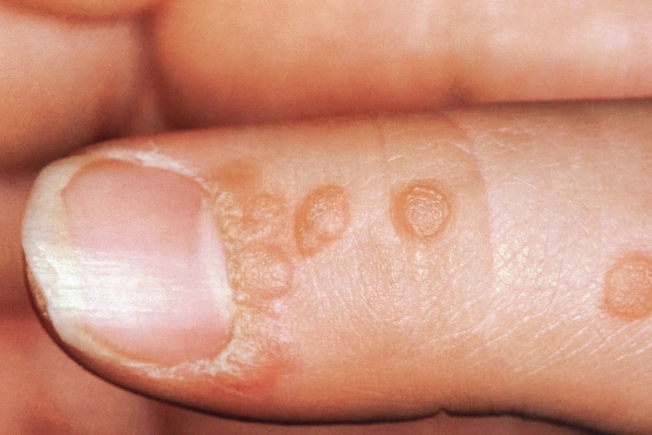
Warts
Warts can pop up on your hands, face, feet, and limbs. All are caused by the human papillomavirus (HPV), but different strains affect only certain body parts. You can pass them to others or a new area of skin by touch. Warts may go away on their own, but treatment stops them from spreading. Over-the-counter remedies can help, but see a doctor for warts that hurt, spread, itch, burn, bleed, or appear on your face or genitals.
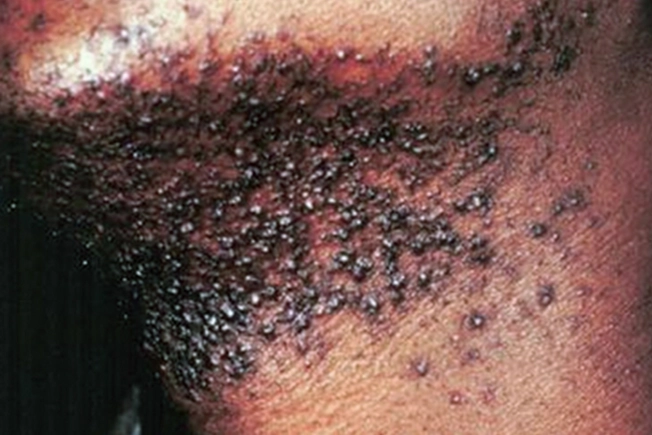
Pseudofolliculitis barbae/Folliculitis
Pseudofolliculitis barbae is an inflammatory response to shaving. Short hairs get "trapped" in the skin, causing breakouts and sometimes infection. It's more common in men.
Folliculitis happens when bacteria infect hair follicles, often on your neck, thighs, armpits, or buttocks. It causes small, red bumps or pimples. You may also get blisters, sores, and itchy or tender skin. To treat it, wash with a clean cloth and antibacterial soap. Your doctor can also prescribe antibiotics.
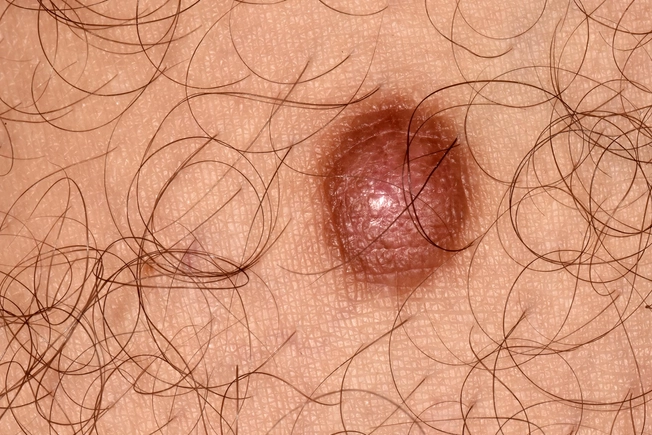
Dermatofibroma
A dermatofibroma is a small, firm, reddish-brown bump that usually appears on your legs. It has nerves and blood vessels, so it can bleed if it’s damaged, like if you shave over it. It’s not clear what causes them, but you may get one after a minor injury like a bug bite. They're harmless, but always let your doctor know about anything new on your skin. They can treat a dermatofibroma if it bothers you. It won’t go away on its own.
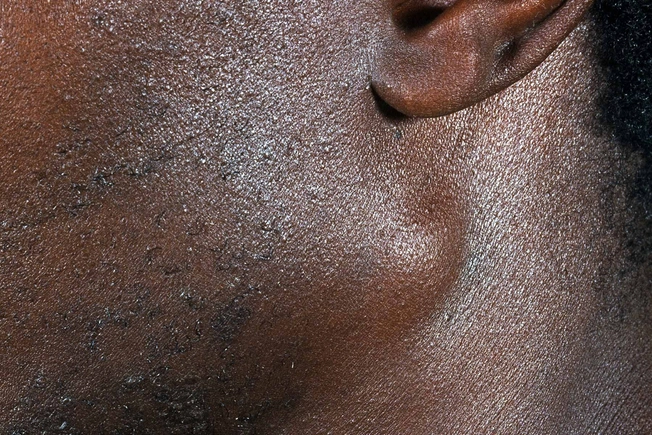
Swollen Lymph Nodes
Small glands in your neck, armpits, or groin, called lymph nodes, are part of your immune system. When you’re fighting an infection, they can swell to pea-size lumps or larger. They get smaller as you get better. But tell a doctor if they’re swollen for 2 weeks or more, feel hard, grow fast, are close to your collarbone, or the skin over them is red. These, along with weight loss, night sweats, fever, or fatigue, may be signs of cancer.
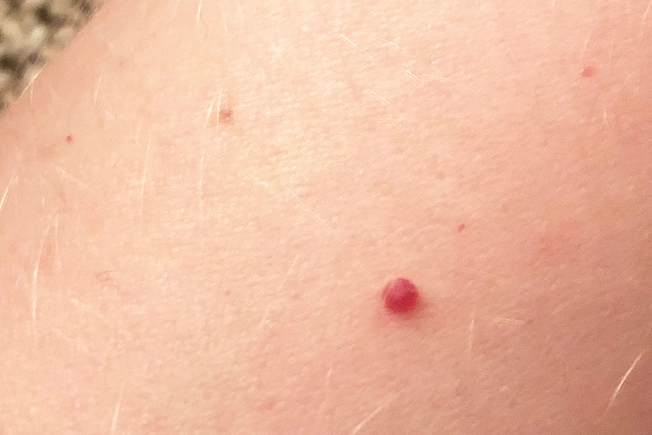
Cherry Hemangioma
These tiny, bright red spots or bumps on your skin are usually harmless. You might start seeing them in your 30s and 40s, and get more of them as you age. If one turns dark brown or black, tell your doctor so they can make sure it’s not skin cancer. In most cases, you won’t need treatment for cherry hemangiomas unless they’re irritated or bleeding. If you don’t like how they look, talk to your doctor about removing them.
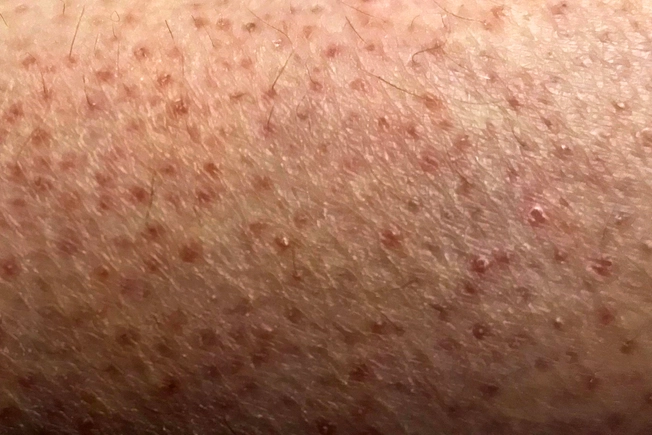
Keratosis Pilaris
When a protein called keratin plugs up your hair follicles, you can get small pointed pimples, a condition called keratosis pilaris. The sandpaper-like bumps usually form on upper arms, buttocks, and thighs. They’re white or red and don’t hurt, but may itch. The common condition is typically inherited, and often goes away as you get older. You don’t need treatment, but skin creams, a soak in a hot bath, and exfoliation may help.
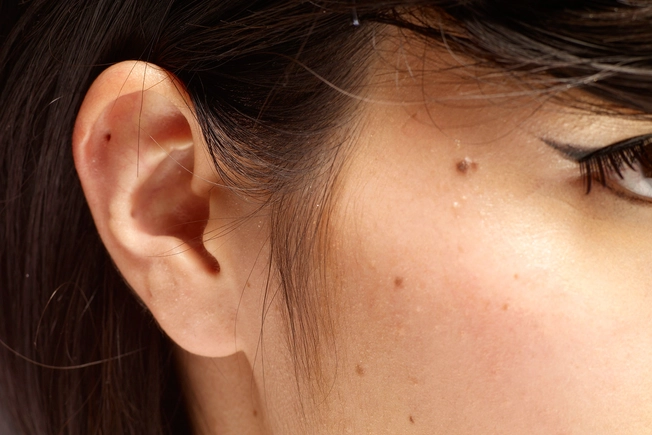
Moles
Almost all adults have moles -- flat or slightly raised round spots. They come in many colors, but they’re often brown or black. Most of the time, you don’t need to worry about them. But those that change in size, shape, or color could signal skin cancer. Show your doctor if a mole has an unusual shape, uneven edges, different colors, gets bigger, grows up from your skin, or bleeds, oozes, itches, hurts, or turns scaly.
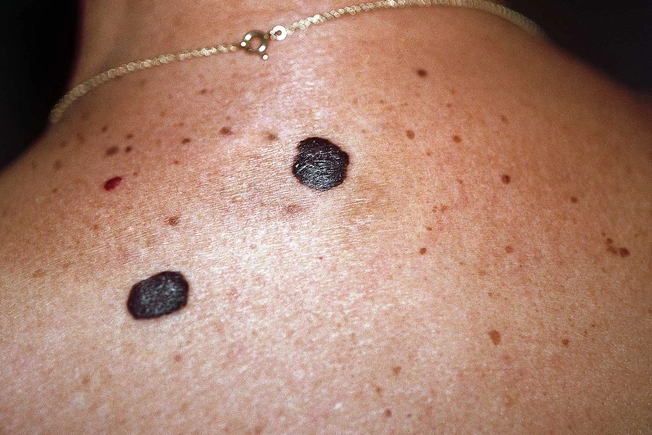
Seborrheic Keratosis
These thick, rough bumps can look waxy or scaly, like they’re pasted on. You can get them anywhere on your skin. They may have a warty surface, but they aren’t contagious. Seborrheic keratosesstart small, but they can grow to more than an inch wide. Some itch, but most are painless and don’t need treatment. If you have one that looks like skin cancer, your doctor may remove it just to be safe.
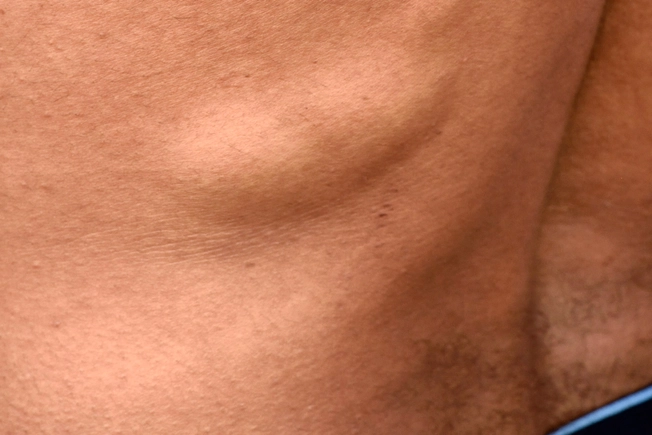
Lipomas
If you have a round, moveable lump under your skin, it may be a lipoma. These fatty masses feel soft, doughy, or rubbery. They usually appear on your neck, shoulders, back, or arms. A doctor can recognize one just by looking at or feeling it. Most are harmless, but if one bothers you, a doctor can treat it with steroid shots, liposuction, or surgery. A lipoma that grows quickly or hurts may be cancer, so be sure to tell your doctor.